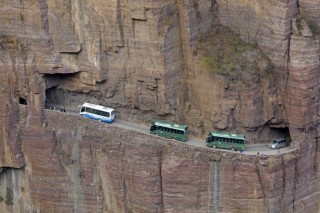Star Photography
The world remains beautiful even after nightfall! From star trails to captivating night scenes, the stunning beauty of the night sky awaits photographers.
For optimal results, venture far from light pollution in the city to remote locations like mountains, countryside, or the seaside.
Shooting the starry sky and night exposures in these serene environments is a popular choice for many.
Star photography typically involves long exposures on a tripod, capturing the mesmerizing movement of star trails caused by the Earth's rotation.
Star photography typically involves long exposures on a tripod, capturing the mesmerizing movement of star trails caused by the Earth's rotation.
The cold can be especially daunting, with nighttime temperatures frequently dipping below 10 degrees Celsius, and dropping to around 0 degrees Celsius in winter. Enduring the cold, adapting to thin air, and combating altitude sickness requires not only warm clothing but also a determined spirit and physical strength.
With the difficulties encountered in mountain night photography, why go through the arduous task of ascending to the mountaintops? Simply put, the higher the elevation, the more breathtaking the view.
Altitude plays a crucial role in atmospheric visibility, and ascending to greater heights offers clearer views and an abundance of stars. To capture awe-inspiring beauty, it's worth going the extra mile.
When observing the night sky in the northern hemisphere, the rotation of the Earth causes all stars, except the North Star, to exhibit significant movement. Therefore, before shooting, it's essential to locate the North Star. Aligning the lens with the North Star during long exposures results in concentric circles as star trails.
Orienting the lens east or west produces diagonal star trails while facing south creates an arc with an invisible center. Exposure times directly affect the length of the star trails, as the Earth rotates 15 degrees per hour.
To capture starry skies effectively, set the camera to Bulb (B) mode and use a shutter cable for precise control over exposure time and photography quality. Special attention should be given to camera battery life, noise, and other issues due to the long exposure times.
Wide-angle and standard lenses are suitable for capturing starry skies, while a stable tripod is a must. Additionally, ensure that the tripod head can handle long exposures without compromising stability.
During nighttime shoots, visibility in the mountains is limited. It's advisable to survey the shooting location during the day to familiarize oneself with the topography and landscape. Determine the shooting direction and framing in advance.
When setting up the tripod, ensure stability and make necessary adjustments to counterweight against local winds. Keep in mind that the chosen spot may not always provide a flat surface, such as on grass slopes, amidst arrow bamboo, or in snow.
Shooting on cliffs or shores with uneven terrain requires extra caution and attention to safety. Mountain weather is unpredictable, so regularly monitor temperature, humidity, climate, and wind, and take appropriate measures to protect the camera from moisture and low temperatures.
If the weather conditions become unfavorable, it's important not to force oneself to shoot. Remember, the mountains will always be there, awaiting another opportunity.
When photographing the starry sky, opt for manual focus instead of autofocus. Switch the camera to manual focus mode and use the screen or electronic viewfinder to locate the brighter stars in the sky. Twist the focus ring to infinity and slowly adjust until the stars are no longer blurry.
Master these tips, and may luck be on your side as you capture the captivating beauty of the starry sky.
You may like:



